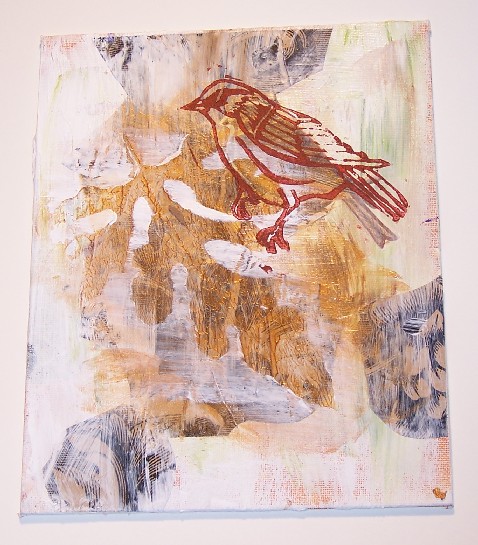
The black-and-brown woodcut pattern is from wrapping paper from my favorite stationary store in Prescott. I did the outline of the leaf by gessoing over a pressed watermelon leaf. The sparrow linocut I did myself.
In addition to learning about what looks good and what doesn’t, I’ve had to learn how to photograph 2-D pieces. I tried scanning it, and that works, to a point, but the file sizes are huge and I don’t like the way it pixelates when I resize it to something managable. I have a fairly decent photography area set up for photographing my 3-D art, but it’s not suitable for flat pieces.
My solution was to tack the picture to a piece of white matboard, and then set it up on an easel. The easel isn’t very good, and it takes some finagling to get the tripod and the easel to align with one another. The colors never come out exactly right either way, so I just have to choose one and know it’s not exact. It will never be exact, anyway, because I use metallic and iridescent and interference paints, and they shift with the angle of the light.
One surprise is how much better they look with flash. I endeavor to disable the flash when I photograph 3-D pieces, pottery especially, because I don’t like the reflection and the glare. You can see on the songbird collage piece the difference between a scanned image (which resembles a flash-less image) and the completed one that was photographed with flash. I thought that with three spots the light would be sufficient, but it turns out that more is better.
One of my great joys in life is learning more each day about something I thought I knew well.
